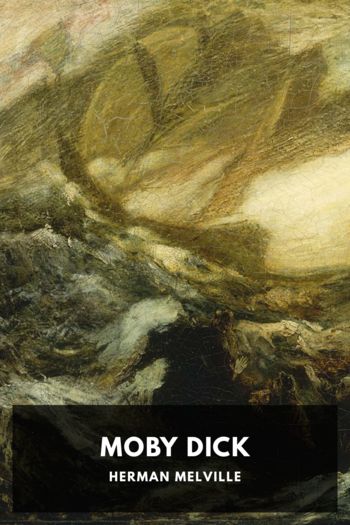Moby Dick by Herman Melville (readera ebook reader .txt) 📕

- Author: Herman Melville
Book online «Moby Dick by Herman Melville (readera ebook reader .txt) 📕». Author Herman Melville
Book I (“Folio”), chapter II (“Right Whale”).—In one respect this is the most venerable of the leviathans, being the one first regularly hunted by man. It yields the article commonly known as whalebone or baleen; and the oil specially known as “whale oil,” an inferior article in commerce. Among the fishermen, he is indiscriminately designated by all the following titles: The Whale; the Greenland Whale; the Black Whale; the Great Whale; the True Whale; the Right Whale. There is a deal of obscurity concerning the identity of the species thus multitudinously baptised. What then is the whale, which I include in the second species of my Folios? It is the Great Mysticetus of the English naturalists; the Greenland Whale of the English whalemen; the Baleine Ordinaire of the French whalemen; the Growlands Walfish of the Swedes. It is the whale which for more than two centuries past has been hunted by the Dutch and English in the Arctic seas; it is the whale which the American fishermen have long pursued in the Indian ocean, on the Brazil Banks, on the Nor’ West Coast, and various other parts of the world, designated by them Right Whale Cruising Grounds.
Some pretend to see a difference between the Greenland whale of the English and the right whale of the Americans. But they precisely agree in all their grand features; nor has there yet been presented a single determinate fact upon which to ground a radical distinction. It is by endless subdivisions based upon the most inconclusive differences, that some departments of natural history become so repellingly intricate. The right whale will be elsewhere treated of at some length, with reference to elucidating the sperm whale.
Book I (“Folio”), chapter III (“Finback”).—Under this head I reckon a monster which, by the various names of Finback, Tall-Spout, and Long-John, has been seen almost in every sea and is commonly the whale whose distant jet is so often descried by passengers crossing the Atlantic, in the New York packet-tracks. In the length he attains, and in his baleen, the Finback resembles the right whale, but is of a less portly girth, and a lighter colour, approaching to olive. His great lips present a cable-like aspect, formed by the intertwisting, slanting folds of large wrinkles. His grand distinguishing feature, the fin, from which he derives his name, is often a conspicuous object. This fin is some three or four feet long, growing vertically from the hinder part of the back, of an angular shape, and with a very sharp pointed end. Even if not the slightest other part of the creature be visible, this isolated fin will, at times, be seen plainly projecting from the surface. When the sea is moderately calm, and slightly marked with spherical ripples, and this gnomon-like fin stands up and casts shadows upon the wrinkled surface, it may well be supposed that the watery circle surrounding it somewhat resembles a dial, with its style and wavy hour-lines graved on it. On that Ahaz-dial the shadow often goes back. The Finback is not gregarious. He seems a whale-hater, as some men are man-haters. Very shy; always going solitary; unexpectedly rising to the surface in the remotest and most sullen waters; his straight and single lofty jet rising like a tall misanthropic spear upon a barren plain; gifted with such wondrous power and velocity in swimming, as to defy all present pursuit from man; this leviathan seems the banished and unconquerable Cain of his race, bearing for his mark that style upon his back. From having the baleen in his mouth, the Finback is sometimes included with the right whale, among a theoretic species denominated Whalebone whales, that is, whales with baleen. Of these so called Whalebone whales, there would seem to be several varieties, most of which, however, are little known. Broad-nosed whales and beaked whales; pike-headed whales; bunched whales; under-jawed whales and rostrated whales, are the fishermen’s names for a few sorts.
In connection with this appellative of “Whalebone whales,” it is of great importance to mention, that however such a nomenclature may be convenient in facilitating allusions to some kind of whales, yet it is in vain to attempt a clear classification of the Leviathan, founded upon either his baleen, or hump, or fin, or teeth; notwithstanding that those marked parts or features very obviously seem better adapted to afford the basis for a regular system of Cetology than any other detached bodily distinctions, which the whale, in his kinds, presents. How then? The baleen, hump, back-fin, and teeth; these are things whose peculiarities are indiscriminately dispersed





Comments (0)